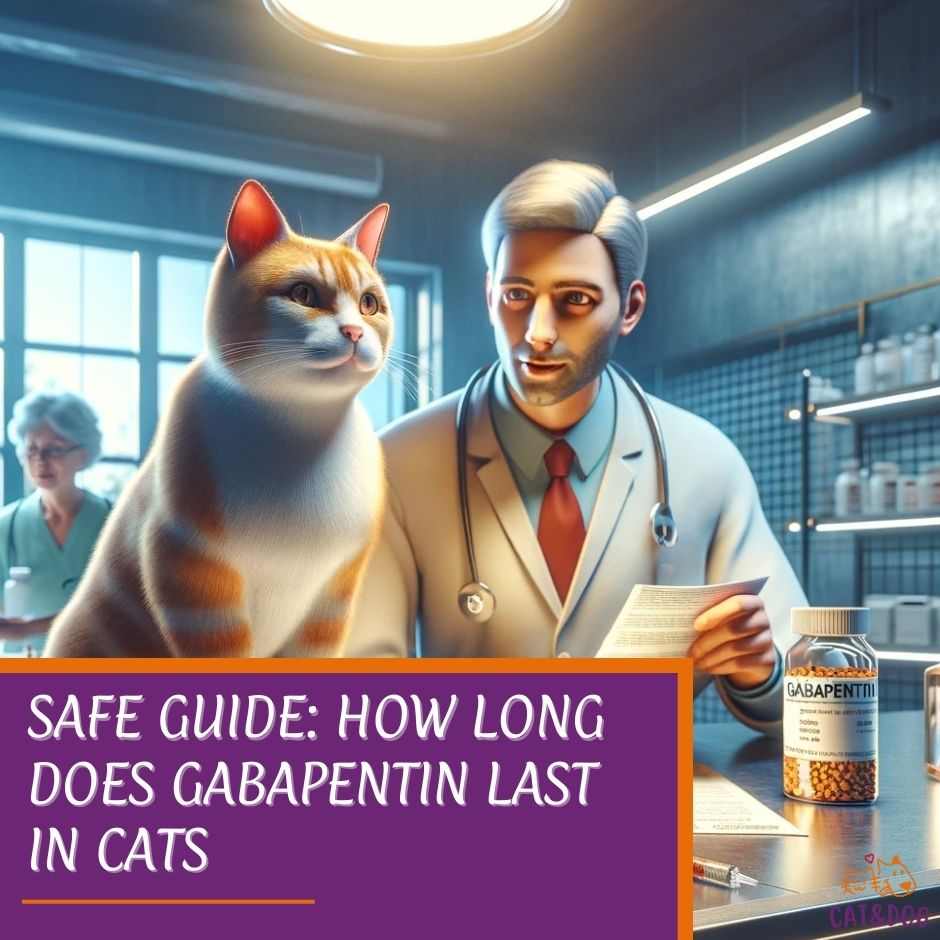“How long does gabapentin last in cats?”
Well, typically, the calming effects of the medication can last between 8 to 12 hours.
However, sticking with the cat analogy, just as some cats are sprinters and others are marathon snoozers, some factors like metabolism, and the prescribed dose can make this duration stretch up to a full day.
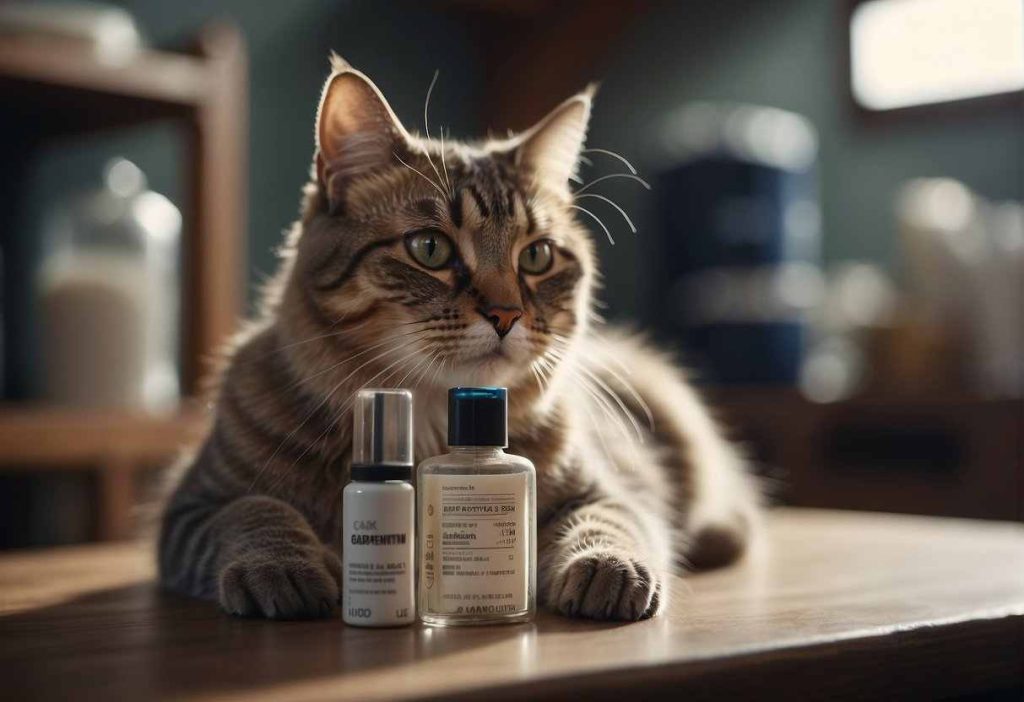
Gabapentin is becoming a buzzword in the feline world, isn’t it?
If you’re a cat owner seeking ways to help your furry friend with pain, anxiety, or even the jitters before a vet visit, you’ve probably heard of this medication.
It’s like that comforting blanket for your cat, providing relief from various discomforts.
Gabapentin’s versatility extends to being used as an anti-seizure medication, easing nerve pain, and even doubling as a sedative. (1)
It’s crucial, though, to navigate this treatment with safety first in mind for your cat. Oversee its administration with a vet to ensure the doses are purr-fect for your kitty’s specific needs. (2)
Key Takeaways
- Gabapentin provides relief from pain, anxiety, and seizures in cats, acting as a comforting agent.
- Effects usually last between 8 to 12 hours, though this can extend to 24 hours in certain circumstances.
- Safe and effective use of gabapentin requires veterinary guidance to tailor the dosage to your cat’s individual health profile.
How Long Does Gabapentin Last in Cats: Duration Explained
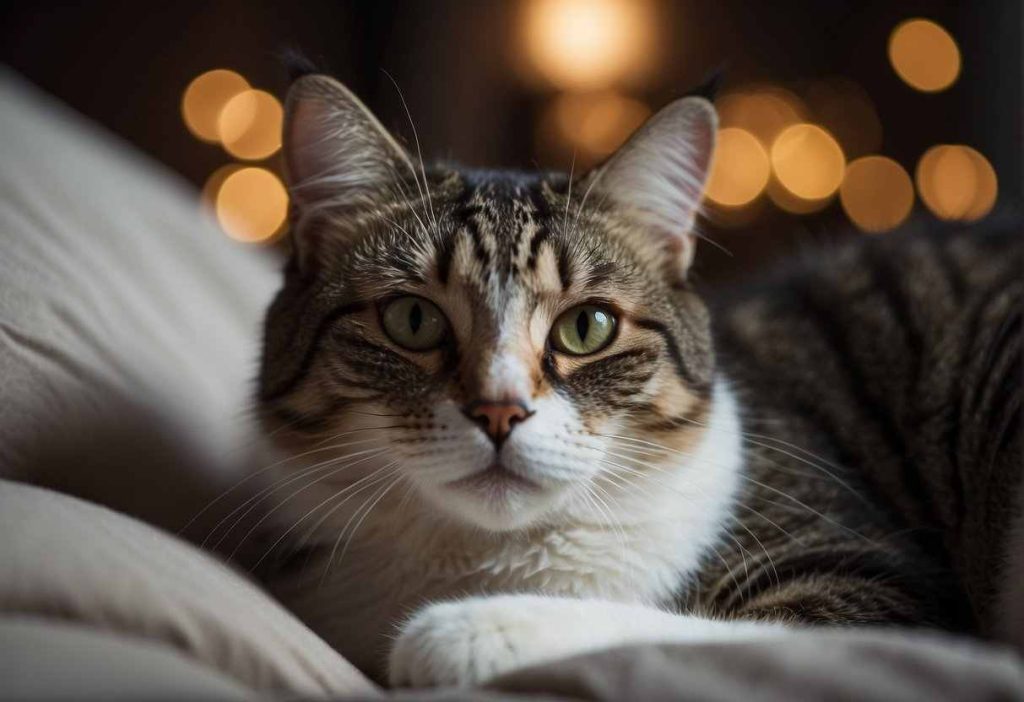
Have you ever wondered how long gabapentin keeps working after your feline friend has taken their dose? Well, let’s dive right in!
Gabapentin typically works for 8 to 12 hours in cats, but this isn’t a one-size-fits-all situation. (2)
Factors Affecting Duration:
- Dosage: More isn’t always better; follow the vet’s prescription!
- Weight: A hefty cat may experience different effects than a lightweight.
- Health: Cats with kidney or liver issues could hold onto gabapentin longer. (3)
Observing Gabapentin’s Effectiveness:
- Begins: Your cat should start feeling relief within a few hours.
- Peaks: Watch for maximum calmness or pain relief midway.
- Fades: After half a day or so, they might regain their usual pep.
Side Notes:
- Keep an eye on unusual sleepiness or wobbles – common but important to note.
- The first sign of it wearing off? Your cat’s returning quirks and mannerisms.
Remember:
- Each cat is unique, so the effects vary.
- Report prolonged or serious side effects to your vet.
In a nutshell, while gabapentin generally lasts about 12 hours, keep a close eye on your furry buddy to nail down the specifics for them. (4)
If in doubt, your vet’s the go-to for the nitty-gritty on how gabapentin and your cat will get along. Here’s to happy, healthy, and hop-along kitties!
Dosage and Administration of Gabapentin
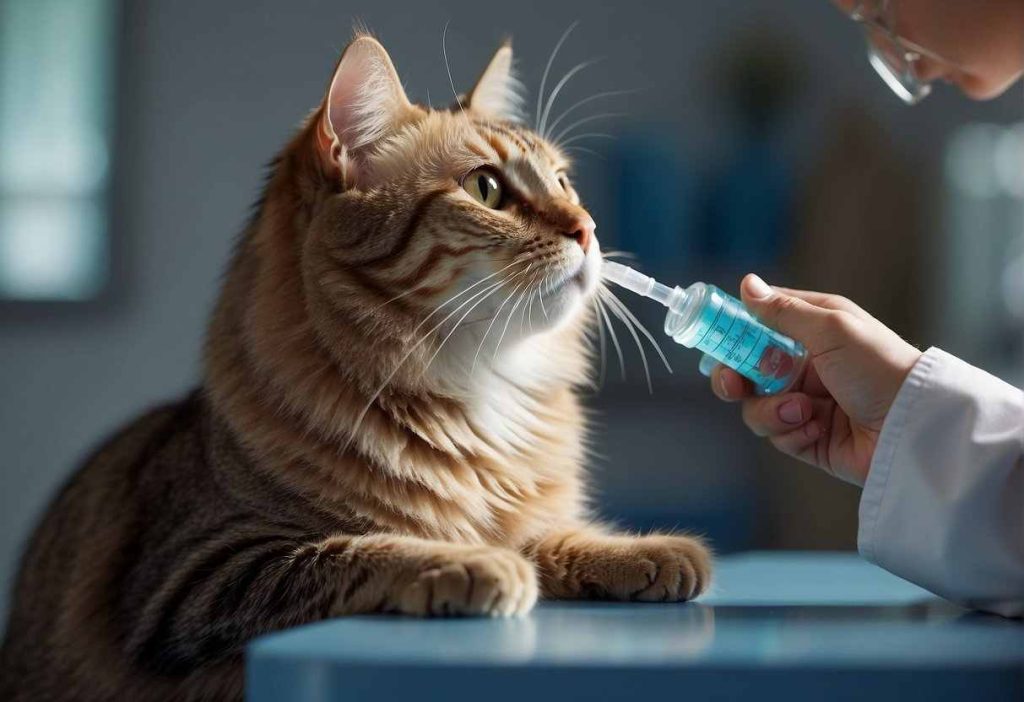
Here’s a quick guide to ensure you’re giving Gabapentin to your cat safely and effectively.
Recommended Dosage Guidelines
For pain management:
- Typically starts at 1.25 to 2 mg/kg every 12 hours.
When dealing with seizures:
- A dose of 2-5mg per pound (5-10mg/kg) every 8-12 hours is recommended. (5)
For anxiety, sedation, or calming before vet visits:
- Smaller or older cats: 40-70mg.
- Adult cats: 75-90mg.
- Administer about 1.5 hours before the stressful event.
Remember, these are general guidelines. Always follow your vet’s advice to a T!
Administering Gabapentin Safely
Giving medicine to cats can be tricky, can’t it? Here’s a step-by-step to make it a breeze:
- Mix it up: If it’s a capsule, you can mix the powder into their food—make sure they eat it all!
- Pill pockets: Use these handy treats to hide the tablet if your cat isn’t too picky.
- Straightforward approach: You can use a pill popper or gently open their mouth to place the pill far back on the tongue.
Your vet may adjust the dosage based on your cat’s response and tolerance to the medication. Keep an eye on your furry friend for any changes and report them to your vet.
Remember, consistency is key to managing their symptoms effectively.
Table 1: Gabapentin Dosage Guidelines
| Condition | Dosage | Frequency |
|---|---|---|
| Pain | 1.25 to 2 mg/kg | Every 12 hours |
| Seizures | 2-5 mg/lb (5-10mg/kg) | Every 8-12 hours |
| Anxiety/Sedation | 40-90mg | As needed before event |
There you have it! You’re now informed about the basics of giving Gabapentin to your cat. Always double-check with your vet, as they know your cat’s unique needs. Here’s to a happy, healthy kitty!
Side Effects and Safety Considerations

When you give your feline friend gabapentin, it’s like handing them a cozy blanket for their nerves. It calms them down, eases their pain, and usually, they tolerate it quite well. (6)
However, sometimes, cats might experience a few bumps along the way.
Identifying Common Side Effects
Common side effects include:
- Sleepiness: Your kitty may snooze more, just like they’ve hit the snooze button on life.
- Mild Disorientation: They might wobble a bit, resembling your first steps on rollerblades.
- Decreased Activity: Less zooming, more lounging.
As a caring pet parent, keep an eye on these. Most of them are pretty harmless and fade as your cat’s system gets used to the medication.
When to Seek Veterinary Advice
Now, what if something seems off? Here’s when to ring up your vet:
- Severe Lethargy: If your cat’s usually the life of the party and now won’t budge, that’s a sign.
- Trouble Eating: If they’re turning their nose up at food when it’s normally chow time central, check in with the doc.
- Persistent Vomiting: It’s more than a hairball issue if it keeps happening.
In a nutshell, you know your cat better than anyone else. If they’re not acting like their usual self, and it’s not just the standard fare of gabapentin side effects, it’s time for a professional paw-by-paw analysis.
Remember, gabapentin is generally safe, but just like trying a new snack at your favorite cafe, it’s essential to know what to expect and when to ask for help.
Keep it all in check, and you and your furry friend will navigate this with purrs and headbutts.
Long-Term Use and Management of Gabapentin
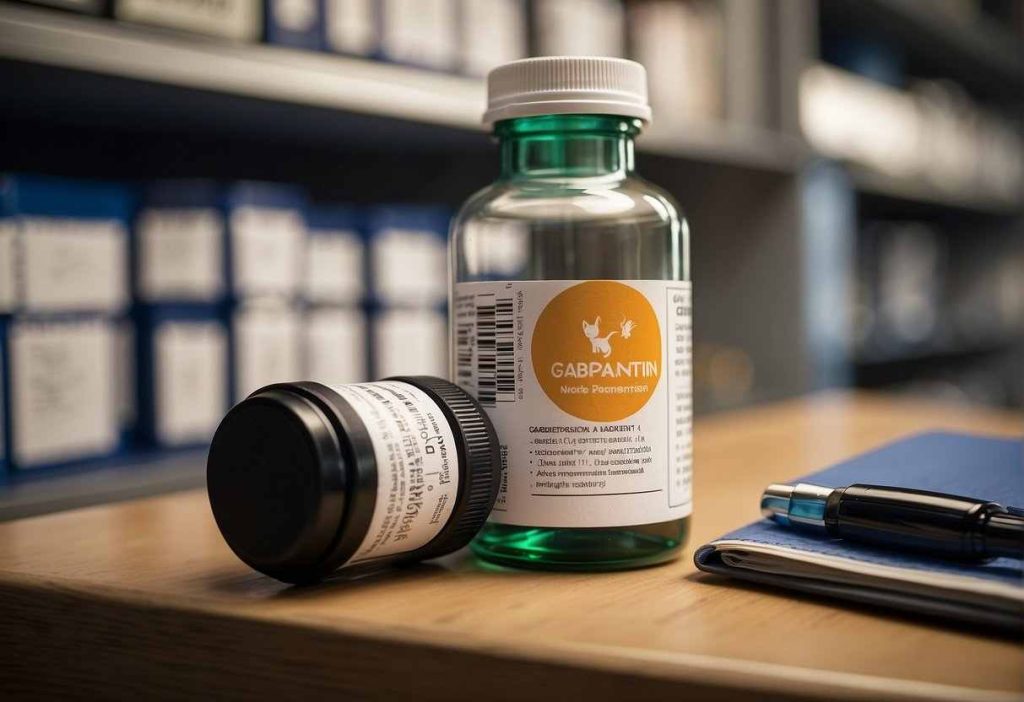
Let’s paw through the pros and cons, and how you can manage this medication long-term for your feline companion.
Pros and Cons of Long-Term Use
- Pros:
- Gabapentin can be a real game-changer in managing chronic pain and conditions like epilepsy.
- With ongoing use, it can help maintain a steady state of comfort, which is purr-fect for your cat’s well-being.
- Cons:
- Over time, there might be a need for dosage adjustments.
- There’s a possibility of side effects that can make your cat moody or sleepy.
Implications of Prolonged Use
- Long-term therapy might lead to dependence, meaning that if it’s time to stop, it should be done gradually to avoid withdrawal symptoms.
- Regular vet check-ups are important to ensure that the treatment is still the cat’s meow and not causing issues.
Managing Ongoing Treatment Got your pen and notebook? Here are a few tips:
- Dosage Discipline: Stick to the prescribed amount and timing like catnip on a scratching post.
- Observation is Key: Keep an eye out for any changes in behavior or health and report them to your vet.
- Routine Vet Visits: Regular check-ups can catch any complications early.
Remember, every cat is unique, just like their paw prints. So it’s essential to tailor the treatment plan to your furry friend’s needs.
Keep those whiskers twitching, and with a bit of care, your cat can continue to live a purr-full life with gabapentin.
Gabapentin’s Mechanism in Cats
This drug is a bit of a jack-of-all-trades and in the feline world, it serves as both a pain reliever and a soother for anxious kitties.
Let’s break down how it ticks inside your furry friend.
How Gabapentin Works Gabapentin acts on your cat’s central nervous system.
It was originally designed for humans as an anticonvulsant, now you’re probably thinking, “But my cat doesn’t have seizures, why this medicine?”
Interestingly, it also targets neuropathic pain by stabilizing electrical activity in the brain and affecting the way nerves send pain messages to the brain.
- Benefits for Different Conditions
- Chronic Pain: Gabapentin provides relief by reducing the neuropathic pain often hard to manage with other medications.
- Anxiety: The calming effect eases anxiety and can make trips to the vet or new environments less stressful. (7)
Quick Facts:
- Action: Stabilizes electrical activity in the brain.
- Uses: Manages chronic pain, and calms anxiety.
By influencing the GABA neurotransmitter, gabapentin alters the pain and stress signals coursing through your cat’s nerves, essentially it helps turn down the ‘volume’ of discomfort and unease.
It’s like providing a comfy blanket of relief for their overactive nerves.
Got a nervous or pained tabby at home? Gabapentin might be a handy addition to their health regimen, under your vet’s guidance, of course.
Just remember, while it’s beneficial, it’s not a cure-all, and always follow your vet’s dosing instructions to the letter. Your fluffy companion’s well-being is worth the effort, isn’t it?
Diagnosing cat health issues accurately is paramount, especially when dealing with symptoms like a black tongue, as it requires a comprehensive understanding of the cat’s overall health and potential underlying conditions.
Financial Aspects of Gabapentin Treatment

When considering Gabapentin for your feline friend, it’s natural to wonder about the cost. How much will it lighten your wallet, right?
Well, the price of Gabapentin can vary, but generally, you’re looking at a range that won’t break the bank.
Now, what about pet insurance? Good news! Many pet insurance plans do cover prescription medications, including Gabapentin. Here’s a quick breakdown to help you navigate:
- Pet Insurance Coverage: Check if your plan lists Gabapentin as a covered medication.
- Deductibles: Understand your deductible, as it’ll affect the overall cost.
| Coverage Aspect | Details to Consider |
|---|---|
| Premiums | Monthly cost of your insurance plan |
| Reimbursement Level | Percentage of the cost you’ll get back |
| Cap on Coverage | Maximum amount the insurance will cover |
Remember, policies differ, so it’s essential to inquire about the specifics.
Let’s briefly touch on cost impact. If insurance has got your back, you might be more inclined to opt for treatment, especially if your kitty needs it for pain management or any other chronic condition.
It’s not just about cost, but also about quality of life—and that’s priceless, isn’t it?
In short, while Gabapentin is usually an affordable medication, your actual out-of-pocket expense could be much lower if you have pet insurance—just be sure to understand the specifics of your coverage.
Always consider both your budget and what’s best for your pet. After all, they’re part of the family!
Practical Tips and Real-World Scenarios
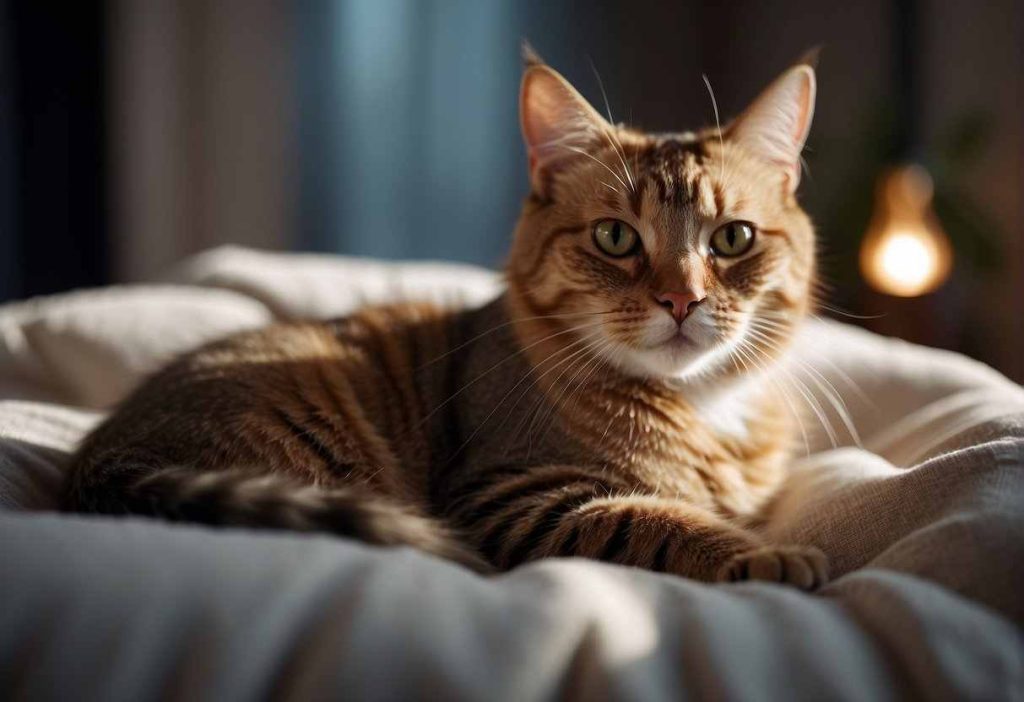
First off, timing is everything! Make sure to administer gabapentin to your feline friend regularly, as recommended by your vet, to maintain consistent pain relief.
Keeping Track:
- Set reminders for doses
- Monitor your cat’s pain levels and behavior
Dosage Tips:
- Ensure the correct dose as prescribed
- Keep the medication out of your cat’s sight and reach
Dietary Considerations:
- Administer with a small amount of food to reduce stomach upset
- Avoid drastic dietary changes during treatment
Now, picture this scenario: Whiskers is usually a bundle of joy, but after surgery, he’s down in the dumps. His vet prescribed gabapentin.
You noticed he’s brighter and seems more comfortable for about 8 hours after each dose. That’s gabapentin at work! Your observation aligns with gabapentin’s known duration of action in cats.
Real-Life Example:
Missy, an elderly cat with arthritis, started gabapentin. At first, it was a guessing game trying to figure out the timing. Soon, her owner established a routine: dosing Missy right before meal times.
This not only made it easier to remember but also helped Missy associate treatment with something positive – food!
Remember, your vet’s guidance should lead the way. Don’t adjust the medication without professional advice. Every cat is unique, and what works for Missy may not work for Whiskers.
So, work closely with your vet to find the best routine for your cat.
Ever wondered how other cat owners handle gabapentin? Many find that keeping a journal of their cat’s response helps them communicate more effectively with their vet, ensuring the best care.
You’re in this together with your furry companion, and small steps can make a big difference in their quality of life.
Quick Recap
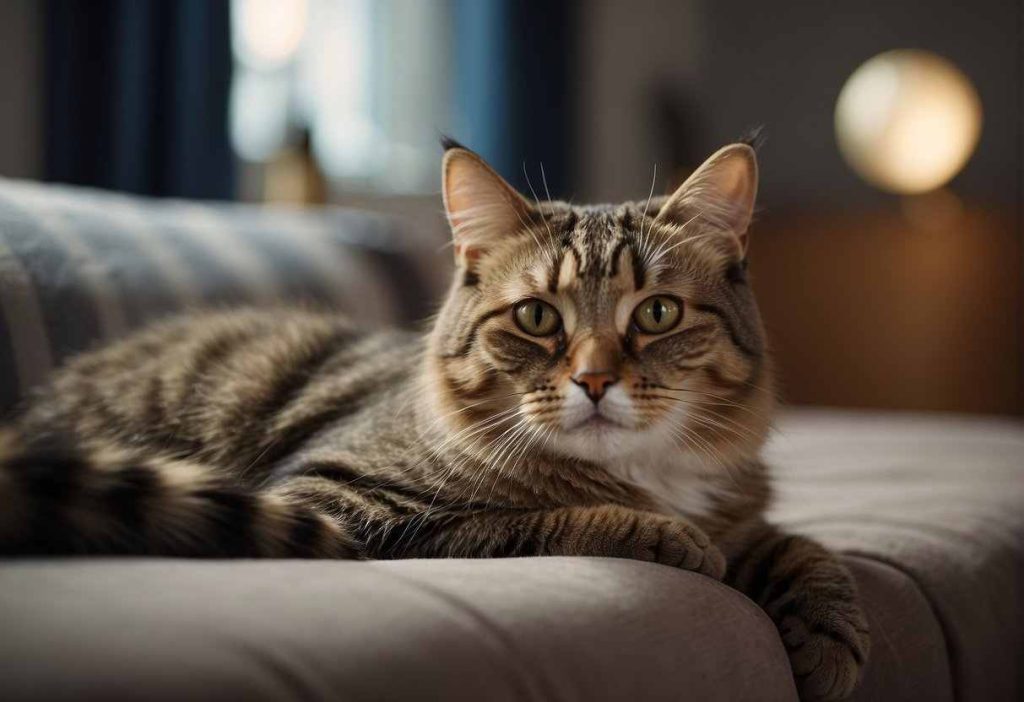
Curious about how long gabapentin lasts when you give it to your feline friend? You’re in the right spot for a quick rundown!
Duration of Effects:
- Typically, gabapentin takes action within 1-2 hours of administration.
- The calming effects generally persist for about 8-12 hours in most cats.
Cats with Specific Conditions:
- For cats with slower metabolism or when higher doses are administered, the effects can stretch to 24 hours.
- Felines with liver or kidney disease might experience prolonged action due to slower drug clearance.
Dosage and Administration:
- It’s crucial to follow a vet’s prescription for dosage.
- Overdosing can lead to side effects such as wobbliness or sedation.
Frequent Dosing & Metabolism:
- Some cats may metabolize gabapentin quicker and could require more frequent dosing.
- The half-life of the drug is about 2-3 hours, influencing how often your cat might need a dose.
Remember, gabapentin usage should be under a vet’s supervision, especially for pregnant cats or those with health issues.
Ensuring the well-being of your furry companion is paramount, and informed decisions based on professional advice lead to responsible pet care.
Keep these pointers in mind, and you’ll be well-equipped to understand how gabapentin works for your cat!
Frequently Asked Questions
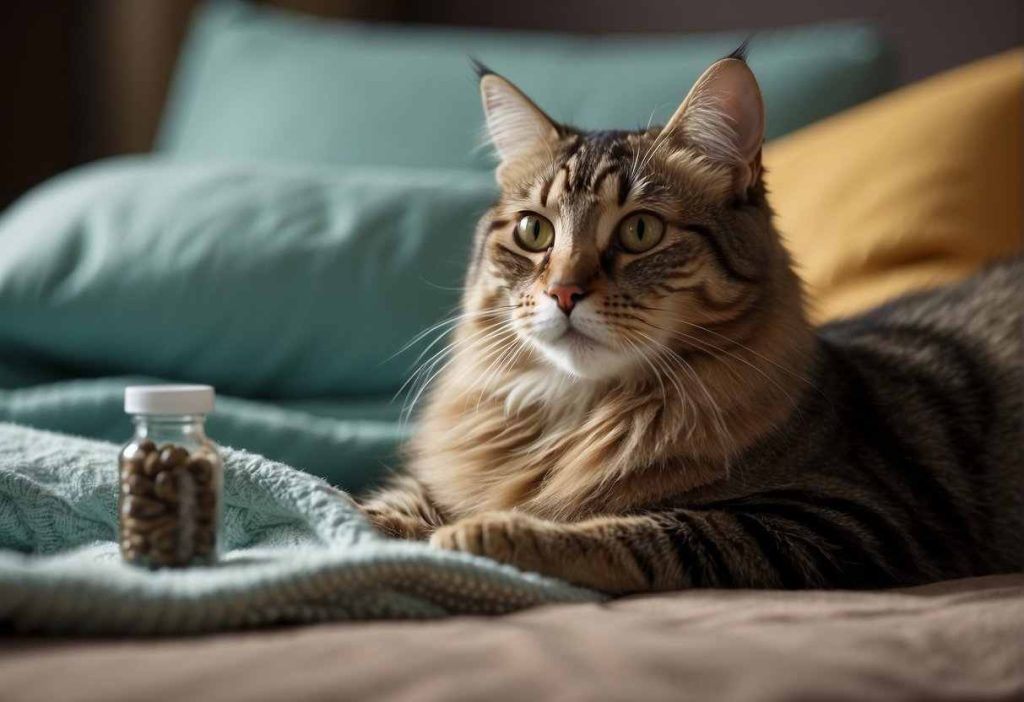
Navigating gabapentin use for your feline friend can be as curious as a cat itself. Let’s answer some whisker-twitching questions to help you understand how long its calming effects may last.
How long does the effect of a single dose of gabapentin last in cats?
A single dose of gabapentin typically holds its sway over your cat for about 8 to 12 hours.
Although most kitties keep purring calmly during this time, it can extend to a full 24 hours, especially for those with a leisurely metabolism or if a higher dosage is used.
Can the duration of gabapentin’s effects vary based on the cat’s size or age?
Yes, indeed! Like us, every cat is unique, and so is their response to medication. Bigger or older cats might metabolize gabapentin more slowly, which could extend the calming effects.
Keep an eye on your furball to see how they respond and chat with your vet if you notice dramatic variances.
What signs should I look for to know if gabapentin is still effective in my cat?
You’ll want to watch for signs of relaxation or sedation, like if they’re less jittery or appear to be in less pain.
If your fur kid is moving around easier or isn’t hiding due to anxiety, the gabapentin is likely still at work.
Is there a difference in duration when gabapentin is used for pain versus anxiety?
The scoreboard doesn’t change much here; the duration of gabapentin’s effect tends to be similar, whether it’s used to soften pain’s sharp claws or to smooth out the ruffled feathers of anxiety.
Still, how your cat’s specific needs can affect this can be a cat conundrum, so consult the wisdom of your vet.
How should I adjust the dosing if the effects of gabapentin seem to wear off too quickly?
Don’t go changing doses on a whisker’s whim! Chat with your vet about this one. They might tweak the amount or frequency of doses to keep your kitty comfortable.
Can I give my cat gabapentin before bed to ensure a peaceful night?
Absolutely — if that’s in line with the dosing schedule your vet prescribed.
This can be a purr-fect use of gabapentin’s sedative effects to help both you and your kitty catch some Z’s.
What should I do if I miss a dose of gabapentin for my cat?
Missed a dose? Don’t fret, and don’t double up without veterinary say-so. Give your vet a ring for advice on how to get back on track.
They’re the cat’s meow when it comes to guiding you right.

